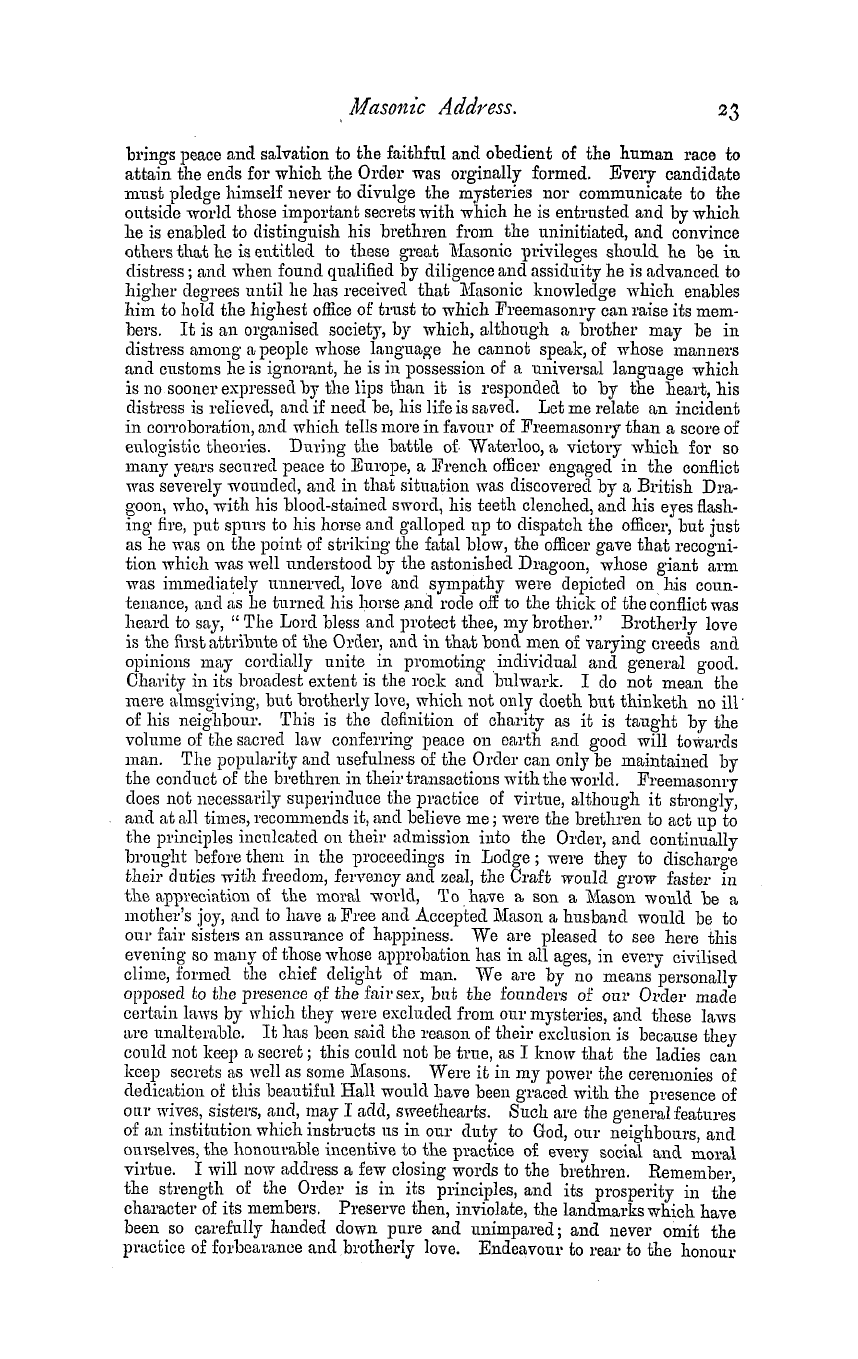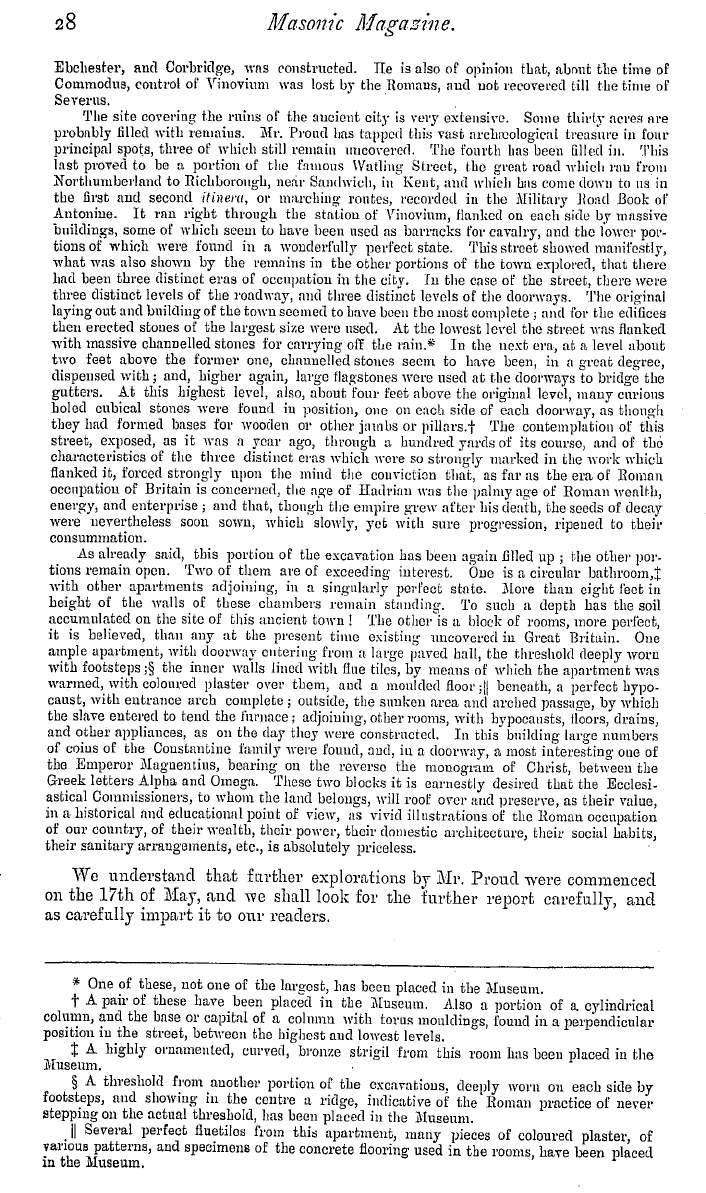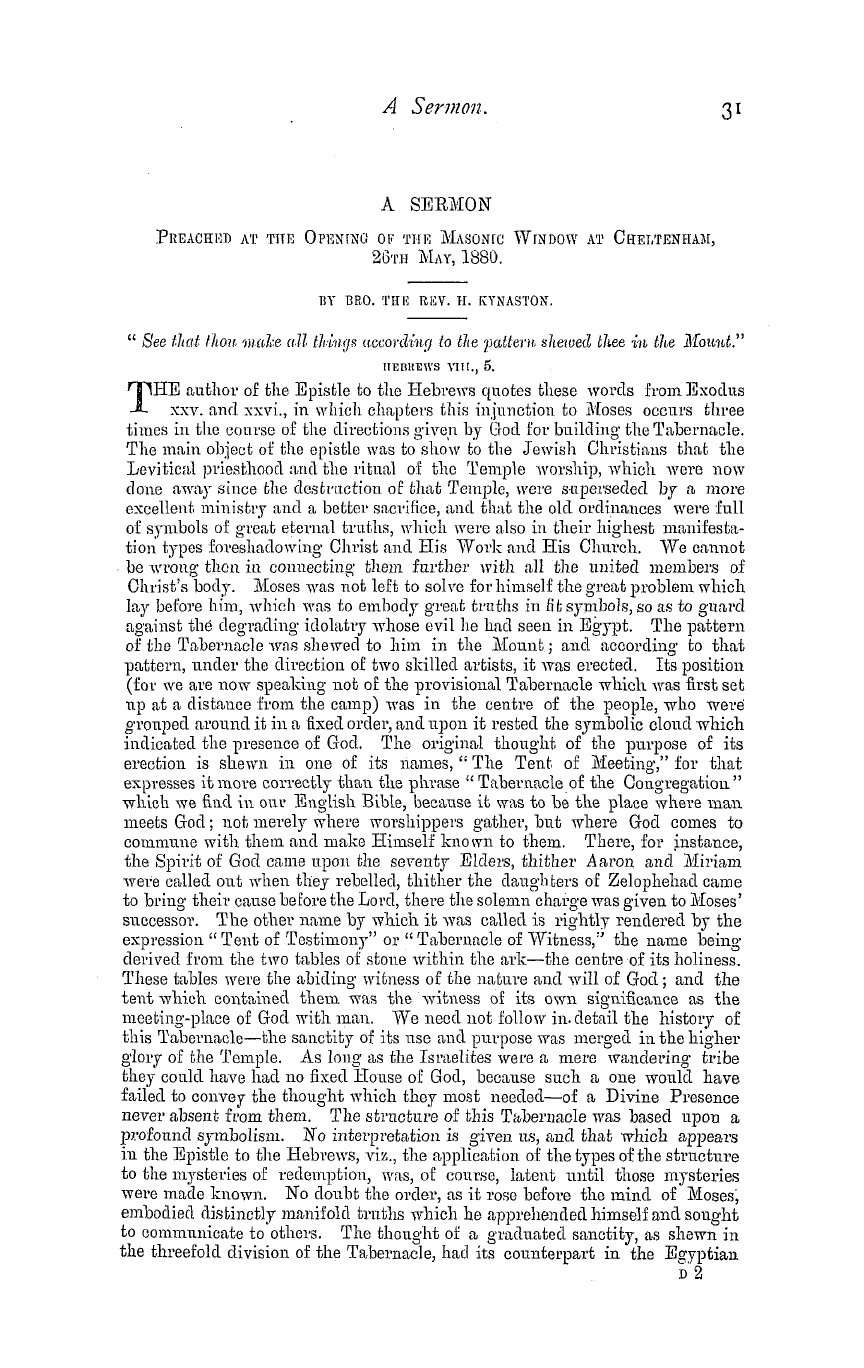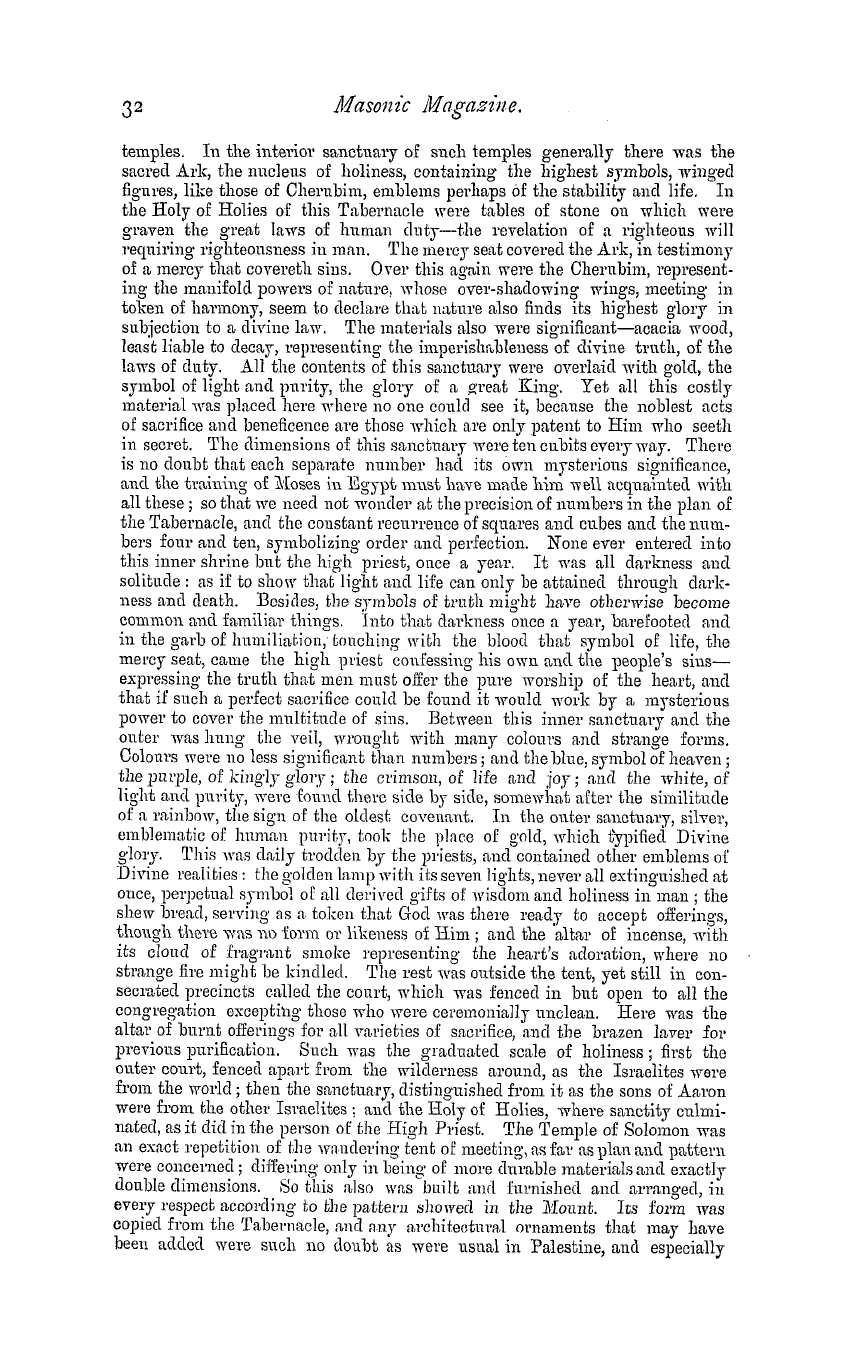-
Articles/Ads
Article KLOSS'S MASONIC BIBLIOGRAPHY. ← Page 2 of 2 Article THE RUNES.* Page 1 of 2 →
Note: This text has been automatically extracted via Optical Character Recognition (OCR) software.
Kloss's Masonic Bibliography.
exaggerating when we state that such a bibliography of Freemasonry would now number at least 7500 works , if not more . Indeed , it is just probable that the number might be close upon 10 , 000 . We have omitted from this list many interesting topics to which Kloss alludes , such as that of Guild life , Chivalry , the German Steinmefczen , the Jesuits , Secret Societies , the Illnminati ( 70 works alone ) , the Asiatic brothers , and the African builders . It is much to be desired that a correct bibliography up to date should be issued .
The Runes.*
THE RUNES . *
WE all of us have seen probably , if not with our own eyes m lapidary inscriptions , at any rate in books , those strange characters which are called Runes , and about which the most opposite opinions have existed . For a long time the prevailing belief was , apparently descending from and fostered by the early Christian missionaries , that they were pagan , magical , cabalistical , and even hermetical . Latterly , however , it has been well-known that a clue to these strange characters had been discovered , though learned men were not
agreed as to their origin or even paternity . The Rev . Isaac Taylor , well-known by his "Etruscan Researches , " has lately written the book to which we allude in a foot-note to tell us what the Runes are , and we confess that as we have seldom read a book with more pleasure , so we listen to him with great faith . Let him , however , speak for himself .
THE FUTHOKCS . At the time when the Roman alphabet was introduced "b y Christian missionaries into Northern Europe , some of the Teutonic nations had been for several centuries in possession of a peculiar alphabet of their own . This ancient alphabet was chiefly used by the Scandinavians , the Northumbrians , and the Goths . The characters are called Runes , and the alphabet bears the name of the Futhorc , from the first six Runes . The one unsolved problem in the history ot the alphabet is the origin of these Runes . That they should have been independently invented by the Teutons is a solution which must be regarded as quite out of
the question . The history of the invention of alphabetic writing shows the enormous difficulty of such an ijndertaking . It was only through the slow developments of many centuries that the united genius of the Phoenicians and the Greeks , the two most cultured races of the South , succeeded at last in elaborating a pure alphabet out of the cumbrous picture-writing of the Egyptian Hieroglyphics . That an equivalent result should have been obtained offhand by any semi-barbarous Teutonic tribe is quite incredible . There are , moreover , such striking resemblances between several of the runes and the corresponding lettei-B of various Mediterranean alphabetsthat the mathematical chances against such a
, series of accidental coincidences are absolutely overwhelming . On these grounds it has been universally admitted that the Runes must , in some unknown manner , have been derived from that oue great parent alphabet to which modern research has affiliated almost every other alphabet of the world—Ethiopic , Arabic , and Hebrew , Greek , Latin , and Etruscan , Indian and Tibetan , Mongol and Malay . Runic inscriptions have been found scattered over a vast region extending from the Danube to the Orkneys . The most ancient of these inscriptions are earlier in date by at least a thousand years than the most modern . During this long
period a coustavit development was going on , and hence we find , as was to be expected , that the Runes of different countries and of different periods present very considerable variations . They may all , however , be classified into three main divisions—the Gothic , the Anglian , and the Scandinavian .
Mr . Taylor successively goes through the various hypotheses as to the origin of the Runes , and dismissing the Phoenician and Latin origin , comes to the conclusion , on what seems to us , we confess , very satisfactory grounds , that the Runes are onl y the development of a form of the old Grecian , the " Thracian " as used by the Greek traders .
THE THRACIAN ALPHABET . The next step in our investigation is to ascertain the characteristics of the al phabet which was used by these Greek traders . The direct evidence as to the Olbian and Thracian
Note: This text has been automatically extracted via Optical Character Recognition (OCR) software.
Kloss's Masonic Bibliography.
exaggerating when we state that such a bibliography of Freemasonry would now number at least 7500 works , if not more . Indeed , it is just probable that the number might be close upon 10 , 000 . We have omitted from this list many interesting topics to which Kloss alludes , such as that of Guild life , Chivalry , the German Steinmefczen , the Jesuits , Secret Societies , the Illnminati ( 70 works alone ) , the Asiatic brothers , and the African builders . It is much to be desired that a correct bibliography up to date should be issued .
The Runes.*
THE RUNES . *
WE all of us have seen probably , if not with our own eyes m lapidary inscriptions , at any rate in books , those strange characters which are called Runes , and about which the most opposite opinions have existed . For a long time the prevailing belief was , apparently descending from and fostered by the early Christian missionaries , that they were pagan , magical , cabalistical , and even hermetical . Latterly , however , it has been well-known that a clue to these strange characters had been discovered , though learned men were not
agreed as to their origin or even paternity . The Rev . Isaac Taylor , well-known by his "Etruscan Researches , " has lately written the book to which we allude in a foot-note to tell us what the Runes are , and we confess that as we have seldom read a book with more pleasure , so we listen to him with great faith . Let him , however , speak for himself .
THE FUTHOKCS . At the time when the Roman alphabet was introduced "b y Christian missionaries into Northern Europe , some of the Teutonic nations had been for several centuries in possession of a peculiar alphabet of their own . This ancient alphabet was chiefly used by the Scandinavians , the Northumbrians , and the Goths . The characters are called Runes , and the alphabet bears the name of the Futhorc , from the first six Runes . The one unsolved problem in the history ot the alphabet is the origin of these Runes . That they should have been independently invented by the Teutons is a solution which must be regarded as quite out of
the question . The history of the invention of alphabetic writing shows the enormous difficulty of such an ijndertaking . It was only through the slow developments of many centuries that the united genius of the Phoenicians and the Greeks , the two most cultured races of the South , succeeded at last in elaborating a pure alphabet out of the cumbrous picture-writing of the Egyptian Hieroglyphics . That an equivalent result should have been obtained offhand by any semi-barbarous Teutonic tribe is quite incredible . There are , moreover , such striking resemblances between several of the runes and the corresponding lettei-B of various Mediterranean alphabetsthat the mathematical chances against such a
, series of accidental coincidences are absolutely overwhelming . On these grounds it has been universally admitted that the Runes must , in some unknown manner , have been derived from that oue great parent alphabet to which modern research has affiliated almost every other alphabet of the world—Ethiopic , Arabic , and Hebrew , Greek , Latin , and Etruscan , Indian and Tibetan , Mongol and Malay . Runic inscriptions have been found scattered over a vast region extending from the Danube to the Orkneys . The most ancient of these inscriptions are earlier in date by at least a thousand years than the most modern . During this long
period a coustavit development was going on , and hence we find , as was to be expected , that the Runes of different countries and of different periods present very considerable variations . They may all , however , be classified into three main divisions—the Gothic , the Anglian , and the Scandinavian .
Mr . Taylor successively goes through the various hypotheses as to the origin of the Runes , and dismissing the Phoenician and Latin origin , comes to the conclusion , on what seems to us , we confess , very satisfactory grounds , that the Runes are onl y the development of a form of the old Grecian , the " Thracian " as used by the Greek traders .
THE THRACIAN ALPHABET . The next step in our investigation is to ascertain the characteristics of the al phabet which was used by these Greek traders . The direct evidence as to the Olbian and Thracian
















































